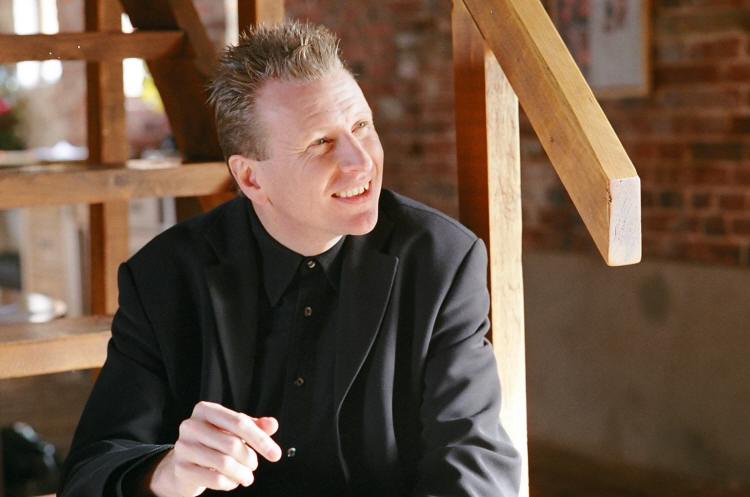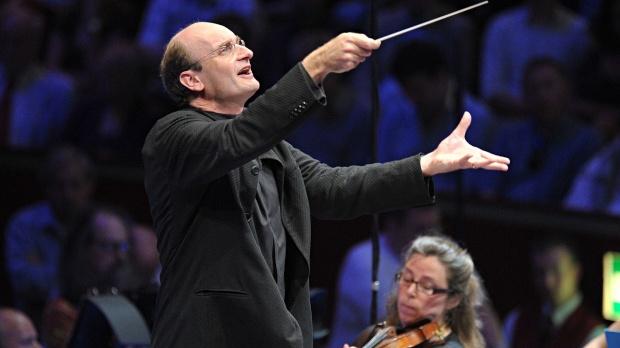Andrew Manze chose an all-English programme for his debut with the London Philharmonic Orchestra. Clarity of texture and disciplined, propulsive tempos are the hallmarks of his conducting, the results of many years as a violinist and ensemble leader in the period instrument movement. They may not seem ideal qualities for the early 20th century romanticism of Elgar, Ireland and Walton, but all of the works responded well to Manze’s treatment, each in its own way.
While he clearly has an ear for detail, Manze is never inclined to constrain his players or to limit expansive orchestral textures. That much was evident from the satisfyingly broad opening chords of Elgar’s Introduction and Allegro, performed here by the London Philharmonic’s full string complement. Yet even from the start the tempos were brisk and, although he let up slightly for quieter passages, there was always a sense that the music was pressing on. Fortunately, the LPO strings, used as they are to working under more effusive conductors, brought a full range of colours and emotions the music, even at Manze’s strict tempos. Particularly impressive was the solo string quartet, made up of LPO players but not the usual section principals. Their rich, bronzed tone distinguished their sound effortlessly from the main ensemble.
John Ireland is best remembered as a miniaturist, but his Piano Concerto is a substantial work of 25 minutes duration. Even so, its material is slight and its expressive range limited, but it never outstays its welcome, combining the idiomatic solo writing that only a virtuoso pianist could pen alongside skillful orchestral writing, always imaginative, if within conservative bounds. Piers Lane (pictured below) gave a convincing performance (from memory – particularly impressive in a work this obscure) and proved the ideal partner to Manze. Like the conductor, he never indulges in romantic excess, but he does push his rubato and phrasing swells just a little further than Manze would – a constructive tension.
 Ireland writes long, lyrical lines for the piano, which he punctuates with brief snippets from around the woodwind and brass sections, all over a carefully orchestrated bed of strings. The sheer skill with which the orchestral part is contrived means that the orchestra can hardly go wrong (the composer’s conservatism in instrumentation was graphically demonstrated through comparison with the Walton in the second half), but the combination of engaged playing, from orchestra and soloist alike, and disciplined conducting, added up to an ideal rendition. The work itself is no neglected masterpiece, but if each of its occasional outings is as good as this, it will always be worth hearing.
Ireland writes long, lyrical lines for the piano, which he punctuates with brief snippets from around the woodwind and brass sections, all over a carefully orchestrated bed of strings. The sheer skill with which the orchestral part is contrived means that the orchestra can hardly go wrong (the composer’s conservatism in instrumentation was graphically demonstrated through comparison with the Walton in the second half), but the combination of engaged playing, from orchestra and soloist alike, and disciplined conducting, added up to an ideal rendition. The work itself is no neglected masterpiece, but if each of its occasional outings is as good as this, it will always be worth hearing.
Manze’s take on the Walton First Symphony was polemic in many ways, but as much was gained as was lost. His tempos were fast and strict in every movement, yet for the most part the result was a feeling of propulsion rather than constraint. The performance was at its weakest when the score called for quiet interludes, the pulse briefly put on hold, an idea outside of Manze’s musical vocabulary. But there was plenty of variety here. Accelerandos and crescendos were always given their full due, even when they started from relatively loud and fast music. The overall shape of each movement came across with a rare clarity: Walton builds through each movement, a fact not always as apparent as it was here.
The conclusion of the first movement was particularly intense, a result both of the tempo and dynamic, and also of the careful build-up. Manze managed to retain the inner detail in the Scherzo, despite more fast tempos. Even the slow movement worked, his fast, unyielding baton moulding an icy, austere beauty from the usually much warmer textures. And the finale was a paradoxical mix of fast and monumental. The caesura before the start of the fugue was reduced to a brief instant, but not the silences between the punch chords and the very end. These last chords were given their full weight, again as much a result of the gradual build-up of the textures as of the actual volume. And yet the discipline was retained, even here, right up to the end, Manze driving the music through to that final smash of the snare drum. Exhilarating.














Add comment